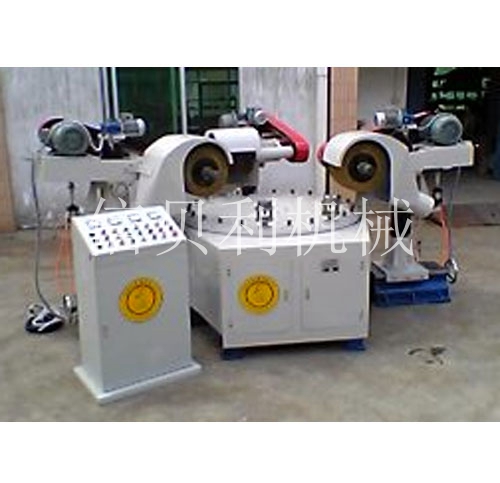1 mechanical polishing
Mechanical polishing (also known as physical polishing) is a polishing method that removes the polished convex portion by plastic deformation on the surface of the material to obtain a smooth surface. Generally, oil stone strips, wool wheels, sandpaper, etc. are used, and manual operation is mainly used. For special parts such as the surface of the rotary body, auxiliary tools such as a turntable can be used, and the method of super-fine polishing can be used for high surface quality requirements. Ultra-fine grinding and polishing is a special-purpose grinding tool. In the polishing liquid containing abrasive, it is pressed against the machined surface to perform high-speed rotary motion. The polishing machine uses this technology to achieve a surface roughness of Ra0.008 μm, which is the highest among various polishing methods. This method is often used in optical lens molds.
2 chemical polishing
Chemical polishing (also known as corrosion polishing) is to allow the material to preferentially dissolve in the slightly convex portion of the surface of the chemical medium, thereby obtaining a smooth surface. The main advantage of this method is that it can polish a workpiece with complex shapes without complicated equipment, and can polish many workpieces at the same time with high efficiency. The core issue of chemical polishing is the formulation of the polishing fluid. The surface roughness obtained by chemical polishing is generally several 10 μm.
3 electrolytic polishing
The basic principle of electropolishing is the same as chemical polishing, which is to selectively dissolve the surface of the material to make the surface smooth. Compared with chemical polishing, the effect of the cathode reaction can be eliminated, and the effect is good. The electrochemical polishing process is divided into two steps:
(1) Macro leveling The dissolved product diffuses into the electrolyte, and the surface roughness of the polishing machine material decreases, Ra > 1 μ m.
(2) Low light leveling Anodic polarization, surface brightness is improved, Ra < 1 μ m.
4 ultrasonic polishing
The polishing machine workpiece is placed in the abrasive suspension and placed together in the ultrasonic field, and the abrasive is ground and polished on the surface of the workpiece by the action of ultrasonic waves. Ultrasonic machining has a small macroscopic force and does not cause deformation of the workpiece, but it is difficult to make and install the polishing machine tooling. Ultrasonic processing can be combined with chemical or electrochemical methods. On the basis of solution corrosion and electrolysis, the ultrasonic vibration stirring solution is applied to dissociate the dissolved products on the surface of the workpiece, and the corrosion or electrolyte near the surface is uniform; the cavitation of the ultrasonic wave in the liquid can also inhibit the corrosion process, which is favorable for surface illuminating.
5 Fluid polishing fluid polishing relies on high-speed flowing liquid and its carrying abrasive particles to wash the surface of the workpiece for polishing purposes. Common methods are: abrasive jet processing, liquid jet processing, hydrodynamic grinding, and the like. The hydrodynamic grinding is hydraulically driven to cause the liquid medium carrying the abrasive particles to flow back and forth across the surface of the workpiece at high speed. The medium is mainly made of a special compound (polymeric substance) which flows at a relatively low pressure and is doped with an abrasive, and the abrasive can be made of silicon carbide powder.
6 magnetic grinding and polishing
Magnetic grinding and polishing is the use of a magnetic abrasive to form an abrasive brush under the action of a magnetic field to grind the workpiece. This method has high processing efficiency, good quality, easy control of processing conditions and good working conditions. With a suitable abrasive, the surface roughness can reach Ra 0.1 μ m. The polishing described in plastic mold processing is very different from the surface polishing required in other industries. Strictly speaking, the polishing of the mold should be called mirror processing.


